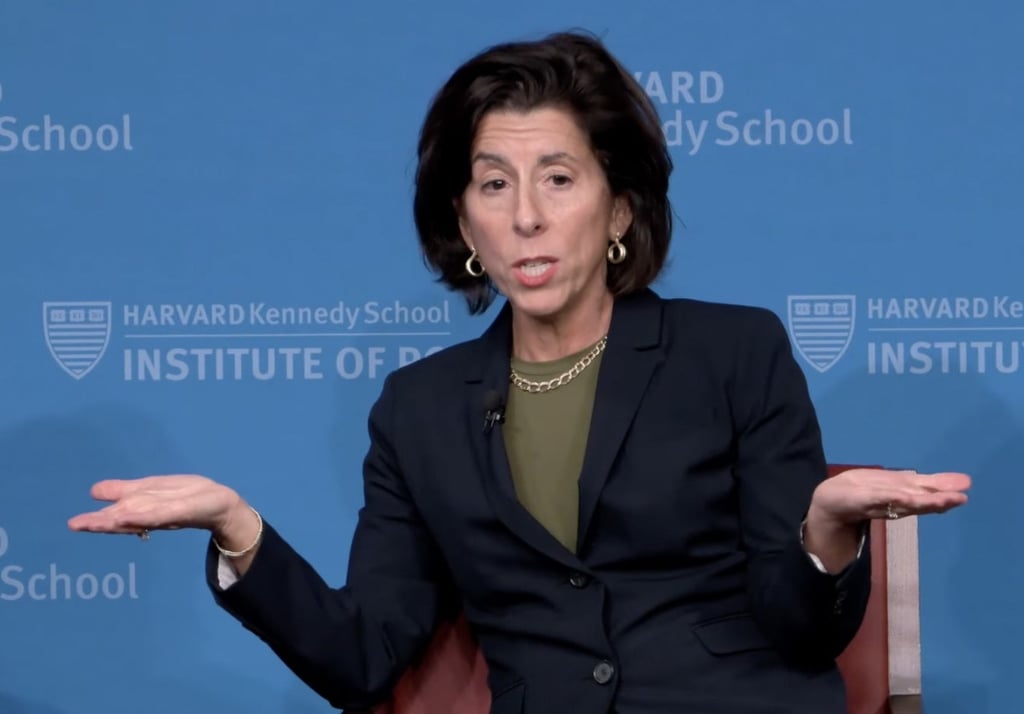King County Metro’s Access Paratransit Service: A Report on Inclusive Mobility and Sustainable Development Goals
Executive Summary
King County Metro’s Access Paratransit service provides essential transportation for individuals with disabilities, embodying the principle that “mobility is a human right.” This service is a critical component of the region’s public infrastructure, directly contributing to the achievement of several United Nations Sustainable Development Goals (SDGs), most notably SDG 10 (Reduced Inequalities) and SDG 11 (Sustainable Cities and Communities). By ensuring equitable access to transportation, the program enhances rider independence, social inclusion, and well-being.
Historical Context and Program Evolution
King County Metro demonstrated a pioneering commitment to accessible transit, predating the 1990 Americans with Disabilities Act. In 1978, the agency began integrating wheelchair lifts into its bus fleet, a foundational step towards inclusive public services. The Access Paratransit service was formally established in 1993, evolving from a smaller neighborhood initiative into a comprehensive system. The program’s growth signifies an increasing commitment to fulfilling SDG 11.2, which calls for accessible and sustainable transport systems for all.
- Initial Service (1993): Provided 250,000 annual customer trips.
- Projected Service (2025): On track to provide 900,000 annual trips.
- Current Ridership: Serves over 13,000 registered clients.
Operational Framework
Client Enrollment Process
The procedure for prospective riders to gain eligibility is structured as follows:
- An assessment form is completed via the Metro Access Transportation webpage.
- A paper application may be requested, which requires authorization from a healthcare professional.
- The Access team processes the application, with an eligibility decision targeted within 21 days of receipt.
- Once approved, clients can schedule trips one to seven days in advance through an online portal or a dedicated reservation phone line.
Fare Structure
The service is designed to be affordable, aligning with the SDG 11 goal of providing accessible and affordable transport systems.
- Per-Trip Fare: $1.75 for a one-way trip.
- Monthly Pass: $63.
- Payment Methods: ORCA card or a Regional Reduced Fare Permit.
Contribution to Sustainable Development Goals
The Access Paratransit service is a practical implementation of key SDG principles, creating a more equitable and sustainable community.
- SDG 10 (Reduced Inequalities): The service directly mitigates inequalities faced by people with disabilities by removing transportation barriers. It ensures they can participate more fully in community life, from attending appointments to engaging in social activities.
- SDG 11 (Sustainable Cities and Communities): Access Paratransit is a model for Target 11.2, which focuses on providing safe, affordable, and accessible transport systems for vulnerable populations. It is an essential element of inclusive urban infrastructure.
- SDG 3 (Good Health and Well-being): By facilitating travel to medical appointments, the service supports physical health. Rider testimonials confirm it also enhances mental well-being by preventing social isolation and fostering independence, which are crucial for a healthy life.
As noted by a 20-year rider, the service provides “independence” and access to “concerts, doctor appointments, and friends’ houses,” illustrating its profound impact on quality of life and its alignment with the core tenets of the SDGs.
1. Which SDGs are addressed or connected to the issues highlighted in the article?
The article on King County Metro’s Access Paratransit service directly addresses two Sustainable Development Goals (SDGs):
-
SDG 10: Reduced Inequalities
This goal is central to the article’s theme. The Access Paratransit service is specifically designed to reduce inequalities in mobility for people with disabilities. By providing a dedicated transportation service for those who “cannot ride Metro’s traditional buses and trains,” the program ensures this segment of the population is not left behind, promoting their inclusion and independence in society. The article’s opening statement that “mobility is a human right” directly aligns with the principle of reducing inequality.
-
SDG 11: Sustainable Cities and Communities
This goal focuses on making cities and human settlements inclusive, safe, resilient, and sustainable. The Access Paratransit service is a key component of an inclusive public transportation system. By creating a “fully accessible bus fleet” and a specialized service, King County Metro is working to ensure that its urban infrastructure serves all residents, including those with disabilities, making the community more accessible and sustainable for everyone.
2. What specific targets under those SDGs can be identified based on the article’s content?
Based on the article’s content, the following specific SDG targets can be identified:
-
Target 10.2: Empower and promote the social, economic and political inclusion of all, irrespective of… disability
The Access Paratransit service directly works towards this target. The article highlights how the service offers independence to its riders. For example, rider Steven Field states, “Access offers me independence,” and mentions he uses the service to attend “concerts, doctor appointments, and friends’ houses.” This demonstrates how the service empowers people with disabilities and promotes their social inclusion by enabling them to participate fully in community life, which they would be unable to do otherwise, as he notes, “Without the service, I’d be sitting at home bored.”
-
Target 11.2: Provide access to safe, affordable, accessible and sustainable transport systems for all… with special attention to the needs of… persons with disabilities
This target is explicitly addressed by the entire initiative described in the article. King County Metro’s commitment, starting in 1978, to build an “accessible bus fleet” and later establishing the “Access Paratransit service” is a direct effort to provide accessible transport. The article details its affordability by stating the cost: “$1.75 per one-way trip or $63 per month.” The service is specifically designed for and gives special attention to the needs of persons with disabilities, making it a clear example of action towards this target.
3. Are there any indicators mentioned or implied in the article that can be used to measure progress towards the identified targets?
Yes, the article mentions several quantitative and qualitative indicators that can be used to measure progress:
-
Indicators for Target 10.2 and 11.2
The article provides specific data points that serve as direct indicators of the service’s reach and impact, which measure both inclusion (Target 10.2) and the provision of accessible transport (Target 11.2).
- Number of users served: The article states that the service serves “over 13,000 riders.” This is a direct measure of the number of persons with disabilities being included and provided with accessible transport.
- Volume of service provided: The growth in the number of trips is a key performance indicator. The article notes a significant increase from “250,000 yearly customer trips” in the past to being “on track to provide 900,000 trips in 2025.” This quantifies the expansion of access.
- Affordability of service: The stated cost of “$1.75 per one-way trip or $63 per month” is an indicator of the affordability of the transport system for its target users.
- User satisfaction and social inclusion (Qualitative): The testimony from rider Steven Field (“Access offers me independence,” “All the drivers are awesome”) serves as a qualitative indicator of the service’s success in promoting social inclusion and improving the quality of life for people with disabilities.
4. Create a table with three columns titled ‘SDGs, Targets and Indicators” to present the findings from analyzing the article.
| SDGs | Targets | Indicators |
|---|---|---|
| SDG 10: Reduced Inequalities | 10.2: By 2030, empower and promote the social, economic and political inclusion of all, irrespective of… disability. |
|
| SDG 11: Sustainable Cities and Communities | 11.2: By 2030, provide access to safe, affordable, accessible and sustainable transport systems for all… with special attention to the needs of… persons with disabilities. |
|
Source: seattlerefined.com







